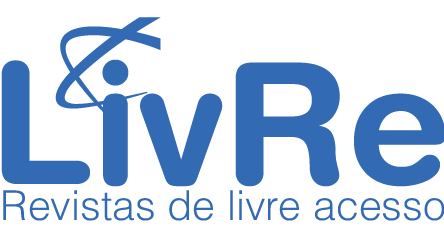Translating a Portuguese poem in LIBRAS. Linguistic considerations and form-focused tasks.
DOI:
https://doi.org/10.26512/belasinfieis.v8.n1.2019.12785Keywords:
Sign language learning, LIBRAS, Common European Framework of Reference for Sign Languages, Sign language tasks. IconicityAbstract
Abstract
The teacher of deaf children in primary education is called to apply sign bilingualism in his/her teaching, and hence to use sign language - such as LIBRAS - as the first language during in-class time, and as a school subject. This again means that all other subjects - among them Portuguese - need to be taught in SL. In fact, Portuguese is taught as the second language of deaf children. In such educational setting, the teacher needs to develop learning materials for LIBRAS. Current research lacks recording such practices, although, unofficially, it is common knowledge that teachers translate existing school materials that have been developed for Portuguese and for hearing pupils in primary education. In this paper, a LIBRAS translation is presented of the poem “As abelhas” by Vinícius de Moraes, with the scope to demonstrate its linguistic use for the teaching of LIBRAS as a first language. Apart from its target vocabulary items, form-focused tasks are demonstrated, indicating their implementation for the development of deaf children’s receptive and productive skills. In doing so, the poem is presented following the A-level descriptors (A1, A2) of the Common European Framework of Reference for Sign Languages.
Downloads
References
GOLOS, Debbie B.; MOSES, Annie M. Supplementing an educational video series with video-related classroom activities and materials. Sign Language Studies, 15, 2, 2015, p. 103-125.
GOVERNMENT OF ALBERTA. Supporting English language learners. Tools, strategies and resources. About ESL Benchmarks. Available at: https://www.learnalberta.ca/content/eslapb/about_communicative_competence.html. 1995-2018.
HIRAGA, Masako K. Metaphor and iconicity. A cognitive approach to analyzing texts. Hampshire, U.K.: Palgrave Macmillan, 2005.
KNOORS, Harry. Foundations for language development in deaf children and the consequences for communication Choices. In: Marschark, Marc; Spencer, Patricia Elizabeth (Eds.), The Oxford handbook of deaf studies in language, p. 19 - 31. Oxford: Oxford University Press, 2016.
KOURBETIS, Vassilis; BOUKOURAS, Konstantinos. Accessible open educational resources for students with disabilities in Greece: they are open to the deaf. In: Stephanidis, C. & Antona, M. (Eds.), Universal access in human-computer interaction. Universal access to information and knowledge. 8th International Conference, UAHCI 2014, held as part of HCI International 2014, Heraklion, Crete, Greece, June 22-27, 2014, Proceedings, Part II. Volume 8514 of the series Lecture Notes in Computer Science, p. 349-357, 2014.
KYLE, Jim; JOHN, Christopher; MERTZANI, Maria; DAY, Linda. The D-Signs project: a visual environment for sign language teaching and learning. In: MERTZANI, Maria (Ed.), Sing language teaching and learning. Papers from the 1st Symposium in Applied Sign Linguistics, Centre for Deaf Studies, University of Bristol, 24-26 September 2009. p.113-128. Bristol: University of Bristol, 2010.
LEESON, Lorraine; BOGAERDE, Beppie; RATHMANN, Christian; HAUG, Tobias. Sign languages and the Common European Framework of Reference for Languages. Common Reference Level Descriptors. Strasbourg: European Centre for Modern Languages of the Council of Europe, Council of Europe Publishing, 2016.
LEESON, Lorraine; GREHAN, Carmel. A common European framework for sign language curricula? D-Sign(ing) a curriculum aligned to the common European framework of reference. In: MERTZANI, Maria (Ed.), Sing language teaching and learning. Papers from the 1st Symposium in Applied Sign Linguistics, Centre for Deaf Studies, University of Bristol, 24-26 September 2009. p. 21- 33. Bristol: University of Bristol, 2010.
MARSCHARK, Marc; SCHICK, Brenda; SPENCER, Patricia Elizabeth. Understanding Sign Language Development of Deaf Children. In: Schick, Brenda; Marschark, Marc; Spencer, Patricia Elizabeth (Eds.). Advances in the sign language development of deaf children, p. 3 - 19. Oxford: Oxford University Press, 2006.
MARSCHARK, Marc; TANG, Gladys; KNOORS, Harry (Eds.). Bilingualism and Bilingual Deaf Education. Oxford: Oxford University Press, 2014.
MERTZANI, Maria (Ed.). Sign language teaching and learning. Papers from the 1st symposium in Applied Sign Linguistics. Centre for Deaf Studies, University of Bristol, September 2009. Bristol: University of Bristol, 2010.
MERTZANI, Maria. How far have we gone with Applied Sign Linguistics in deaf education? In: Pro-Posições, 26, 3(78), 2015, p. 41-58.
QUADROS, Ronice Müller de; SCHMIEDT, Magali L. P. Idéias para ensinar português para alunos surdos. Brasília: MEC, SEESP, 2006.
ROSÁRIO GREGOLIN, Maria. Os caminhos da língua Portuguesa 1. São Paulo: Atual Editora, 2001.
SUTTON-SPENCE, Rachel. Analysing Sign Language Poetry. Hampshire, U.K.: Palgrave Macmillan, 2005.
SUTTON-SPENCE, Rachel; WOLL, Bencie. The linguistics of British Sign Language. An introduction. Cambridge: Cambridge University Press, 1999.
TAUB, Sara F. Language from the body: Iconicity and metaphor in American Sign Language. Cambridge: Cambridge University Press, 2004.
VINSON, David; THOMPSON, Robin L.; SKINNER, Robert; VIGLIOCCO, Gabriella. A faster path between meaning and form? Iconicity facilitates sign recognition and production in British Sign Language. In: Journal of Memory and Language, 82, 2015. p. 56”“85.
Downloads
Published
How to Cite
Issue
Section
License
Given the public access to this journal, the texts are free to use but requires the recognition of the original authorship and initial publication in this journal to be properly stated.
 The journal allows the use of works published for non-commercial purposes, including the right to submit the work to publicly accessible databases. Published contributions are the sole and exclusive responsibility of the author(s).Â



















